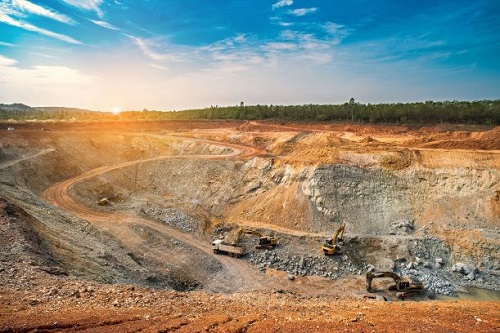Understanding The Background Of Mining
Anything that cannot be grown, must be mined. Mining involves extracting valuable minerals from the Earth. This process is essential for food production, infrastructure, and many other things that we value.
In the US, mining played a big role in the settling of the American West. There was a great demand for minerals after the Civil War as the US changed from a farming nation to an industrial nation.

Types of Mining
There are four main mining methods: underground, open surface (pit), placer, and in-situ mining.
Underground mining
Involves digging down into the earth creating tunnels and shafts that reach the deposits of resources.
Surface mining
Surface mines are typically used for shallow deposits that are less valuable. I think most of us think of “caves” when we think of underground mining. It involves the removal of plant life, soil, and sometimes bedrock to allow access to resource deposits. Open-pit and strip mining are two methods.
Placer Mining
Think of panning for gold. This is usually done in beds, sands, or other sedimentary environments. A portion of the world’s Titanium is mined this way. The process involves sifting valuable minerals from sediments. The material is rinsed and separated to pull out the desired mineral.
In-Situ
In-situ (or on-site) mining is a process of injecting a solution into the mineral(s) such as copper and uranium artificially dissolving in order to leach the product out of the ground.
Preparation for Mining
After navigating through all the permissions, permits, plans, etc., there is much preparation for setting up a mining job. The type of mining operation also affects the requirements set for the mine’s closure. It would be wise when possible, to plan the setup and closure at the same time. You will save valuable resources and time when you get to that point.
Covering those reusable or saleable items saves on your investment. It would also be smart to consider updating the closure plan at regular intervals (considering the length of time the mine may be operational and reconfigurations that may have occurred).

Plastics for Equipment
There are different types of plastics used for mining equipment.
Acrylic (PMMA)
Acrylic plastic sheeting is known to be very clear like glass and great impact resistance. Acrylic is often used for mining applications like trucks, excavators, windshields, and safety windows. This type of plastic provides operators with a clear view of their surroundings. Acrylic (PMMA) also protects operators from debris or other hazards.
High-Density Polyethylene (HDPE)
High-Density Polyethylene (HDPE) sheeting is the most malleable, versatile, and eco-friendly plastic on the market. HDPE is commonly used in applications like water bottles and hard hats. Manufacturers use this plastic to transfer waste materials and for mining waste pipes. HDPE is popular for piping applications because it resists abrasions and chemicals. This prevents breaking, rusting, and corroding. HDPE piping is also leak-free because pipes are often fused together.
Polycarbonate (PC)
Polycarbonate plastic sheets are used as heavy equipment glazing to reinforce windshields and windows of mining vehicles. PC is much stronger than glass, so it protects against debris and rocks while still providing great visibility. This plastic is also heat resistant and a great insulator so it can protect vehicle operators from high noise levels and extreme temperatures (up to 240° F).
Polyvinyl Chloride (PVC)
Polyvinyl Chloride (PVC) is used in piping systems for air reticulation and waste transfer. PVC is commonly used in slurry lines because of its flexibility and high abrasion resistance. This allows for the transfer of waste materials without leaking or breaking. PVC is also used for cable and wire insulation, and protecting electronic components from dampness, changing temperatures, and other difficult conditions.
Ultra-high Molecular Weight Polyethylene (UHMW-PE)
UHMW-PE is wear-resistant, lightweight, durable, and versatile. These qualities are what make UHMW-PE a desirable plastic for mining applications. UHMW-PE is often used in gears, sheaves, and other components that need to be resistant to daily wear and tear. Also, this plastic is more resistant to friction which makes it ideal for applications like outrigger pads and conveyor belts that can't afford to have machines, materials, and people slipping around.
Conclusion
There are different types of mining that require preparation. Equipment is an important part of the mining process. There are various plastics that can be used to cover equipment. A few of the most important qualities that plastics need to have for mining equipment include puncture resistance and durability.
Whether your mining is above ground (pit) or underground, it is very likely that curtains and covers are needed for containment and product/material protection. Griffolyn® pallet covers and curtains are used for those instances. Griffolyn® reusable reinforced plastic curtains are used to direct the airflow inside the mines. Dust, chemical odors, etc. can be toxic and you want to provide your miners with as much protection as possible. Griffolyn® has several grades of clear reinforced plastic which works well for the curtains/partitions.

